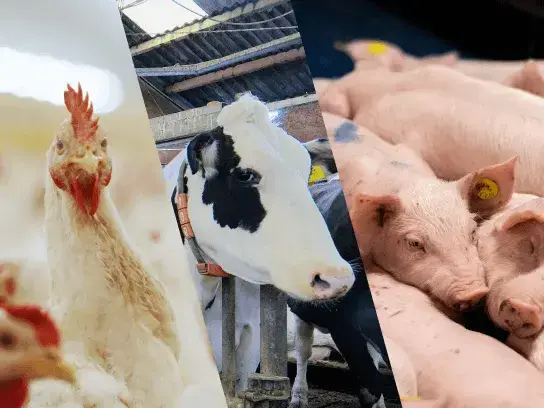Poultry lighting
Properly adapting poultry lighting to the unique needs of both the poultry type and housing environment not only boosts performance but also significantly reduces costs
Broilers
Improved uniformity, FCR and more
Laying Hens
Higher egg production and lower costs
Parent Stock
More hatching eggs, higher hatchability and more
Turkeys
Peak turkey efficiency, cost-effective farming and more
High poultry performances
By fulfilling the needs of the type of poultry, good poultry lighting improves performances in many ways. For example:
Increased egg production
Low poultry-related costs
Optimal lighting makes poultry feel and perform better. This reduces various poultry-related costs:
Fewer floor eggs
Decreased mortality
Lower antibiotic costs
Low operating costs
High quality lighting specifically made for poultry farming reduces operating costs. Benefits include:
Lower energy costs
Less labour costs
Reduced replacement costs
Our lighting solutions
Our customers speaking
Join the HATO family
We’re always open to new dealerships, product-related partnerships, collaborations to improve farm performances and more.
Frequently Asked Questions
We’re here to make things clear and simple.
Whether you’re just getting started or diving deeper into our solutions, you’ll find helpful answers to common questions right here.
What does UVA light do for laying hens?
UVA light helps hens mature faster by supporting the growth of features like combs and wattles, which are linked to egg production. In trials, hens with UVA lighting started laying earlier and laid more eggs compared to those without it. For example, by week 31, hens under UVA laid 345 eggs (per 4 birds) vs. 297 eggs in the control group. It’s a simple way to boost early productivity.
Why use dynamic LED lighting in poultry houses?
Dynamic LED lighting lets farmers adjust the spectrum, colour and brightness of the lights to match the birds’ needs. Blue tones help calm birds, while red light supports laying. These systems also mimic natural daylight, improve animal behaviour, and save energy by giving just the right light at the right time.
How can lighting help reduce floor eggs and pecking in aviary systems?
Good lighting design helps guide birds to lay eggs in nests and stay calm. Keeping nests slightly darker and walkways brighter encourages proper laying behaviour. Even light across the barn also prevents shadows that can stress birds or trigger pecking. The result: fewer floor eggs and calmer flocks.
Let's have a chat
We’re happy to answer all your product-related questions and discuss how our lighting solutions can tackle your challenges.
HATO Insights
Poultry lighting matters. That’s why we share our knowledge with the world through HATO Insights.
Why HATO's 50,000 Hours Outshine Other's 100,000
When you see lighting specs like “50,000 hours” or “100,000 hours,” it’s easy to assume that more...
Why Assessing Livestock Lighting Boosts Welfare and Profits
Lighting plays a crucial role in livestock farming, directly impacting animal health, welfare, and...
At HATO, we think high-quality lighting solutions, designed to enhance animal welfare and livestock production, must be accessible and affordable for all farmers.
Success Stories
Five Years, Zero Replacements: Why CORAX Is George Navaro’s Lighting of Choice
Herman Kusters: I would definitely recommend RUDAX

.webp)
.webp)